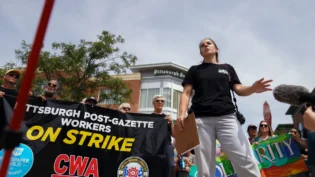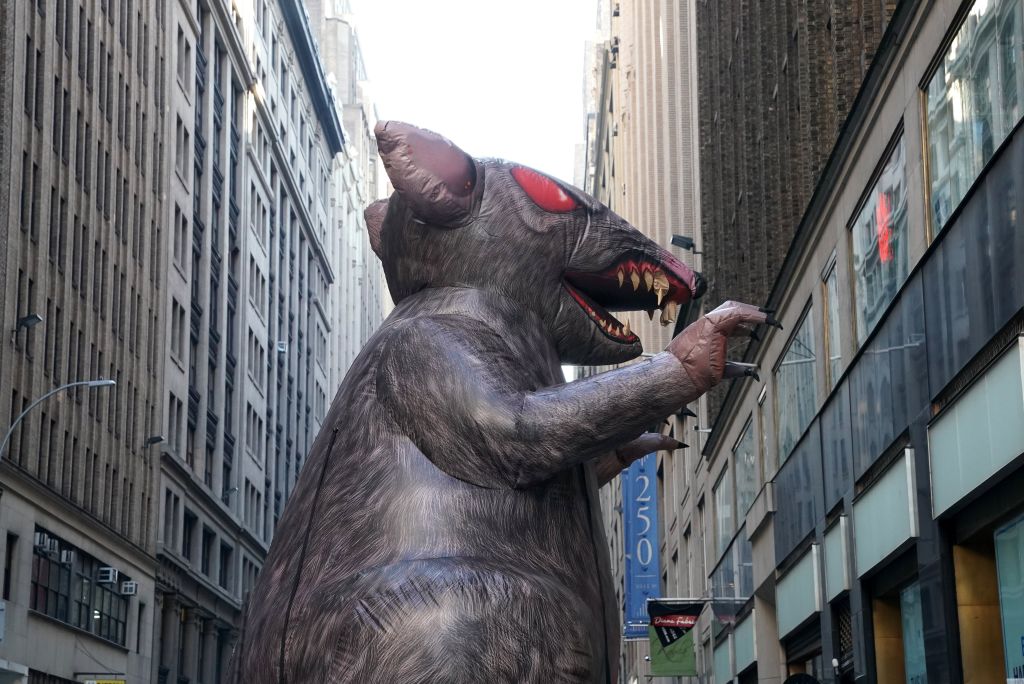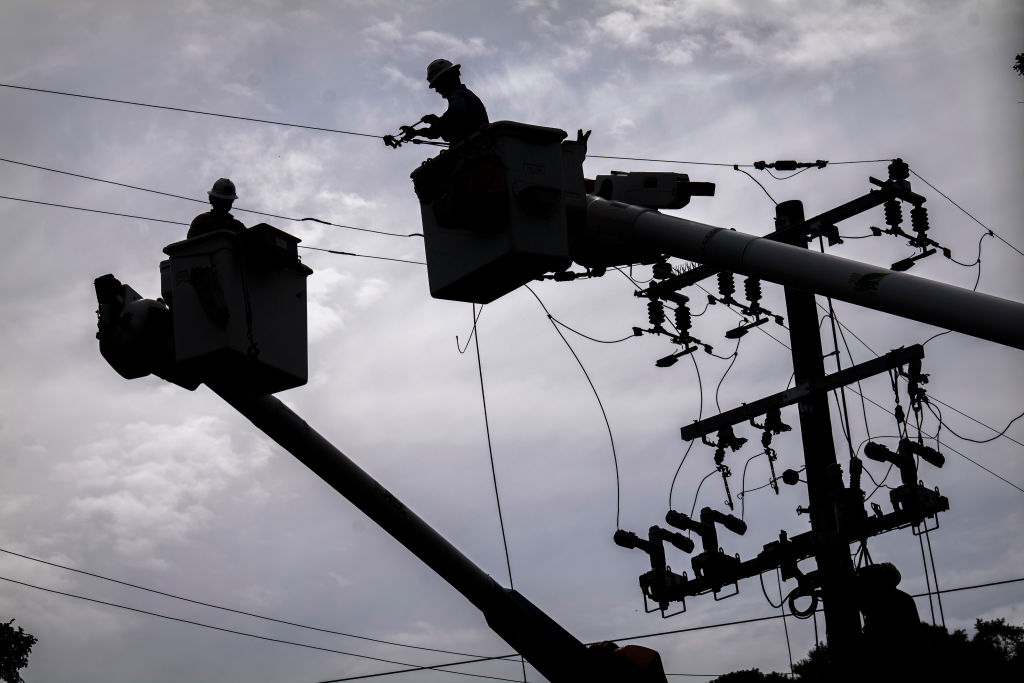
After Germany’s Election, the Left Can Hope Again
February 24, 2025
Democrats Appear Paralyzed. Bernie Sanders Is Not.
February 24, 2025
Over the last decade, journalists have unionized their newsrooms in record numbers. Since 2016, nearly 8,000 media workers from 146 companies have unionized with The NewsGuild-Communications Workers of America alone.
To get a better sense of what union organizing in journalism looks and feels like for women, researchers Ever Josue Figueroa (University of Colorado, Boulder), Gino Canella (Emerson College), and Annalise Baines (University of Zurich) set out to answer two questions:
- How does union organizing in journalism affect women journalists’ work routines and professional identities?
- How does union organizing in journalism affect the relationships among women journalists, the public, and members of the labor movement?
Their paper, “Organizing solidarity: Newsroom unions, gendered labor, and professional identity,” was published in Journalism Practice earlier this month. The study’s authors interviewed 24 women journalists in the United States who were involved with their newsroom union’s organizing committees. Their ages ranged from 24 to 63 and six of the 24 sources identified as non-white.
The researchers found that, while journalists often unionize as a result of industry-wide financial challenges and to address pay disparities, sources said that along the way developed more empathy for their communities and fellow media workers and started to question journalistic norms.
The most interesting parts of the paper are the quotes from interviewees. Some examples below:
“The collapse of the industry’s economic model”
Angela, a journalist who has worked for a large metro newspaper on the West Coast for 20 years, said repeated staffing cuts and changes to workers’ benefits packages were especially hard on journalists with families and children.
“This was a newsroom that at one point had something like 1,000 journalists, and it was down to 400,” she said. “Over time they had just been chopping away, chopping away, chopping away, and the feeling was that we were getting to the point where we were going to start hitting bone.”
There was a disconnect, she said, between the cuts and the fact that management was “paying themselves multimillion-dollar bonuses for basically gutting the company.”
Pursuing a union was motivated by her desire to preserve the newsroom for future journalists and for communities that depend on it for important civic information.
“This hopefully won’t be a digital sweatshop, this will be a place where I’ll have some worker protections, and I think that brings relief.”
Tara, a 45-year-old reporter for a major metro daily in the Northeast and the unit secretary of her union, said that while unions can offer protections for workers, such as just-cause termination, unions alone cannot fix the systemic issues facing the industry:
We get asked a lot in unionization drives, “What can the union do to protect us, to stop a hedge fund from buying us, to stop the owners from simply deciding to shut down the publication?” And the answer we have to give people is nothing.
“I approach stories from a much more informed position when it comes to workers and their needs”
Laura, a 40-year-old journalist in the Southwest, said that union organizing has made her more aware of the fact that “a lot of the stuff that we already do as journalists isn’t really objective.” Although she didn’t necessarily embrace an activist posture, she said union organizing has forced her to reexamine the implicit power dynamics in her editorial decisions.
For example, while reporting on a proposed city ordinance that would ban people from sleeping in their cars, she was told by her editor to “be careful” and only speak with the usual list of sources: city officials, concerned residents, and policy researchers.
She pushed back: “I’m writing about a ban on living in your vehicles, and I should really be talking to people living in vehicles.”
Some journalists described how their experience unionizing made them develop shared solidarity with sources. More important, shared solidarity with readership was activated from a recognition of their own self-labor contributed during the unionization campaign.
Maria, a 28-year-old journalist in the Southeast, stated, “Being part of the union has made me realize how involved unions are in general. Even when the Amazon unionization efforts were happening, I just recognized that you’re able to kind of be able to stand in solidarity.”
She later emphasized, “If that was my beat, I would have to cover it unbiasedly, but you come to appreciate how much work was put on their side.”
Isla, a 63-year-old editor and the president of her union, said, “I approach stories from a much more informed position when it comes to workers and their needs.” In addition to her union organizing, she has also reported on local small businesses. This combination, she said, has helped her develop “a deep understanding of the challenges that company owners are facing.”
To avoid potential criticism from readers that her work has a pro-union bias, she often asks colleagues to review stories she edits about workplace disputes and labor issues. “Just out of an abundance of caution so that nobody could suggest that this story wasn’t handled objectively,” she said.
[Nora] said when her colleagues attempted to build solidarity in the community, they leaned into the notion of journalism as a public service. “It’s sort of like nonprofit work, where people are like, we’re not here to make money, we’re here to do the work and serve our community,” she said. “And so, if you’re upset about a lack of coverage, it’s often because of [our working conditions]. So, supporting the actual journalists, the working people, by way of unions, who are trying to fight that, can help your case, right?”
“It was often women doing the work”
Angela, a Latina journalist, said these gaps are created when women and people of color enter the profession. She mentioned a fellowship program her paper established to create a pathway for underrepresented journalists into the field. When fellows were hired for staff positions, however, they were offered only slightly higher salaries than their fellowship stipends.
“There was a concern that their wages were deflated because they came into the company and the company knew how much they were making as a trainee, and they’d offer like a little bit more,” she said.
Union organizing made this discrepancy more salient for her white colleagues, many of whom didn’t know such gaps existed. Angela added, “making sure not only that we had ethnic diversity but gender diversity, racial diversity, age diversity, making sure that we had conversations about accessibility [for colleagues with disabilities].”
In another example, Maria, a Latina journalist, described a key moment in her organizing campaign, where certain union members insisted on an anti-racism statement in the union’s mission statement. She described how initially there was pushback from some union members on the statement’s inclusion; some considered it unnecessary.
Maria explained that advocating for the inclusion of an anti-racism statement allowed her to articulate her intersectional perspective to the rest of the newsroom and made her feel more included and connected in the newsroom. Prior to this discussion, Maria and her white colleagues “didn’t really talk much, but that particular event brought us together while we were working on that letter.”
Tara said the work union organizers are doing in newsrooms mirrors the work that feminist organizers have done for decades within social movements.
“I think like every social justice movement everywhere, it was often women doing the work, you know, the nuts and bolts, administrative work,” she said. “The top officials are often men, and they get up and make real good speeches, and then the work often still falls to the women behind the scenes. We live in a patriarchal society.”
Another journalist for a medium-sized newspaper in the Midwest spoke about her frustrations with trying to get her male colleagues to contribute to union activities.
“All the tasks end up falling on us, because no one else will do it,” she said.
Read the full study here.
Great Job Hanaa’ Tameez & the Team @ Nieman Lab Source link for sharing this story.





